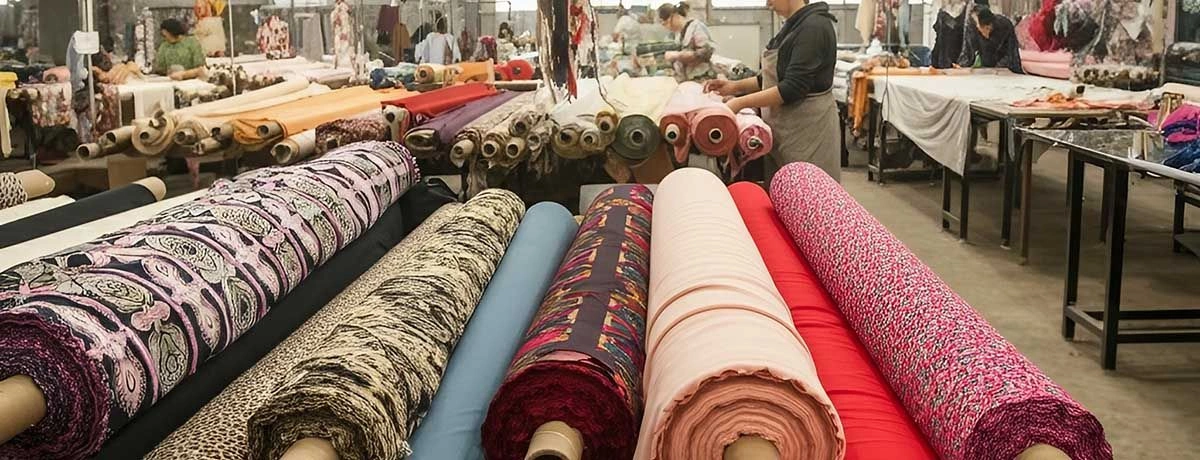Sewing & Fabrics Industry Guide for Pro’s

The Base of the Sewing & Fabrics Industry
Textiles are the foundation of many industries, from garment creation to home décor. The sewing and fabric industries are the middle ground between raw material and consumer ready products. For garment manufacturers, textile traders and home textile creators understanding fabrics and sewing techniques is key to making great products and being competitive.
This guide covers the basics of the sewing and fabric industries, fabrics, sewing techniques, sourcing high quality materials and sustainability practices. It also has actionable tips to help you with SEO and marketing.
Types of Fabrics and Their Uses
Understanding the world of fabrics is key for garment manufacturers and textile traders. Here’s a list of popular types and their best uses:
Lace and satin are also part of the diverse fabric options available, catering to various sewing needs for both beginners and experienced individuals.
1. Cotton
Properties: Soft, breathable, versatile.
Uses:
-
Garment Manufacturing: For shirts, casual wear, undergarments.
-
Home Textiles: Bedsheets, curtains, tablecloths.
2. Silk
Properties: Luxurious feel, lightweight, delicate.
Uses:
-
Garment Manufacturing: Evening wear, scarves, accessories.
-
Home Textiles: Decorative cushions, premium bedding.
3. Linen
Properties: Durable, moisture absorbing, natural.
Uses:
-
Garment Manufacturing: Summer dresses, trousers.
-
Home Textiles: Table linens, napkins, upholstery.
4. Polyester
Properties: Strong, wrinkle resistant, cost effective.
Uses:
-
Garment Manufacturing: Sportswear, outerwear, uniforms.
-
Home Textiles: Upholstery, curtains, casual throws.
5. Wool
Uses:
-
Garment Manufacturing: Sweaters, coats, suits.
-
Home Textiles: Blankets, rugs.
By choosing the right woven fabric for the intended use, businesses can ensure durability, comfort, and customer satisfaction.
Sewing
Sewing brings fabrics to life, allowing you to sew handmade clothing with a personal touch. It’s a crucial skill in both garment and home textile manufacturing. Whether you’re sewing a gown or upholstering furniture, mastering sewing techniques is key.
Basic Sewing Techniques
-
Straight Stitch: The base of most sewing projects.
-
Zigzag Stitch: Adds flexibility and prevents fabric from fraying.
-
Seam Finishing: Clean edges.
Advanced Sewing Techniques
-
French Seams: Used in high end garments for a finished interior.
-
Edge Binding: Adds durability and decoration to textiles.
-
Topstitching: Adds design and reinforces seams.
With advances in sewing machines and digital technology manufacturers can use automated machines to handle complex patterns and repetitive tasks.
Sourcing High Quality Fabrics
Sourcing great fabrics by the yard doesn’t just make great products it makes your brand. Here’s how to source well:
Look for Quality Indicators
-
Fiber Content: Check labels for percentage of natural vs synthetic fibers.
-
Thread Count: Higher thread count means better durability.
-
Finish: Make sure the fabric feels smooth and defect free.
Build Relationships with Suppliers
-
Negotiate: Ask for bulk discounts and payment terms.
-
Request Samples: Test before committing to a larger purchase.
-
Go Local: Sourcing locally can save on shipping and get faster deliveries.
A great example is a textile trader who switched to sustainable fabrics. By vetting eco friendly suppliers they reduced costs and rode the wave of the growing demand for green products.
Sustainability in the Textile Industry
The textile industry gets a lot of flak for its environmental impact. To address this we need to adopt sustainable practices.
Environmental Impact
Textile production is responsible for 10% of global carbon emissions. Water usage to produce traditional fabrics like cotton is crazy, synthetic fabrics contribute to microplastic pollution.
Sustainable Practices
-
Eco Friendly Fabrics: Use organic cotton, bamboo, recycled polyester.
-
Waste Reduction: Implement circular production to recycle fabric scraps.
-
Energy Efficiency: Invest in renewable energy.
A home textile manufacturer recently implemented advanced sewing techniques and switched to organic cotton. This resulted in 25% less waste and customer satisfaction through greener products.
SEO for the Sewing Industry
Optimizing your blog posts or e-commerce site can get you more traffic. When you shop for fabrics online, you can enjoy the convenience of browsing an extensive collection of quality materials from the comfort of your home. Here’s a quick SEO checklist:
Keyword
Use industry terms like “types of fabrics”, “high quality textiles”, “sustainable sewing” in headlines, subheadings and throughout the content.
Add images of fabric samples, sewing techniques and finished products. Infographics with sustainability stats are super engaging.
Case Studies and Testimonials
Show real life examples. One example is a sewing blog that used focused keywords like “advanced sewing methods” and got 200% increase in organic traffic.
Marketing Your Sewing & Fabric Brand
Get traffic to your website or product pages with these:
To attract more visitors, consider showcasing a variety of fabric color options, including the popular 'Ballet Pink' in your floral print shirt fabric collection. This can appeal to customers looking for fabric for crafting or sewing projects.
Social Media
Use Instagram and Pinterest to post images of fabrics, garments and home textiles.
Guest Posting
Partner with textile bloggers or industry publications to get more exposure.
Email Campaigns
Offer fabric swatch samples or discounts on sewing supplies to subscribers.
A garment manufacturer who implemented a social media strategy saw their post engagement go up by 50% which means more website traffic and sales.
Invest in Quality, Invest in Success
The sewing and fabrics industry is all about innovation and quality. For garment manufacturers and textile businesses understanding fabrics, perfecting sewing techniques and adopting sustainable practices is not just nice to have but must have.
Now go get started! If you’ve tried any of these out, let us know in the comments or share this with your sewing community! 😊
